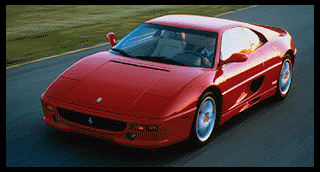
|
 |
|
|

We are often asked to what degree racing experience affects the development of road cars. Right from its beginnings Ferrari has continually demonstrated how its involvement in racing contributes to performance and active safety.
Never before, has such an important innovation as the F1 transmission closer by technicians and drivers to improve lap times in Formula 1 been introduced on production cars so well and in such a relatively short time frame.
The Ferrari "F1-type power train management" means that Ferrari can offer customers and collectors a technical solution capable of significantly improving overall performance, safety and driving quality.
The advantages of this innovation are that in a relatively short time it is possible to foresee this technology being introduced to high volume production car models.
|


|
Dimensions and Weights
| Light alloy tank | 18 Imp gal
21.7 US gal |
Engine
| 8 cylinders in 90° V layout |
| Bore and stroke | 3.35 x 3.03 in |
| Unit displacement | 26.7 cu. in |
| Total displacement | 213.3 cu. in |
| Maximum power @ 8250 rpm | 375 HP |
| Maximum torque @ 6000 rpm | 268 lb. ft |
| Bosch Static electronic ignition |
| Bosch Motronic 5.2 injection |
Performances
|

